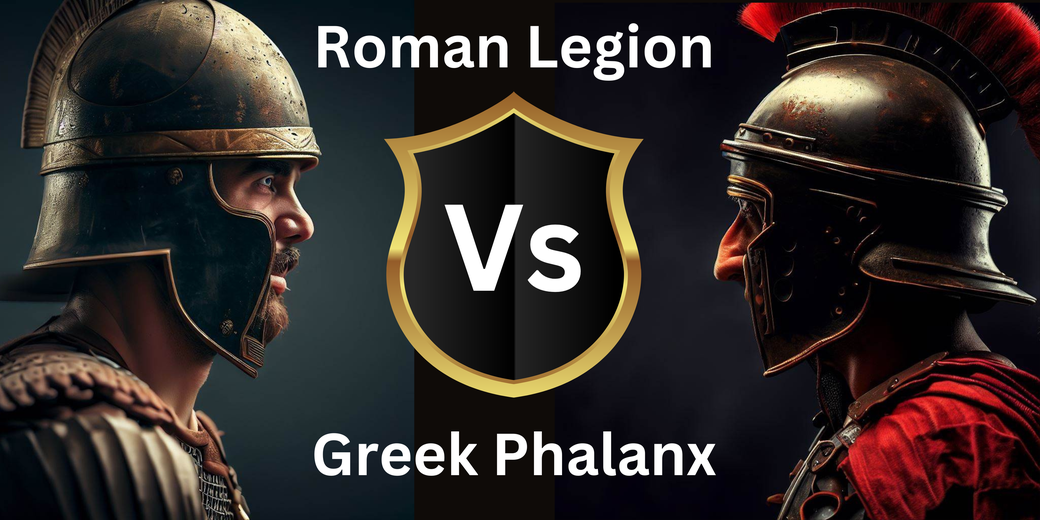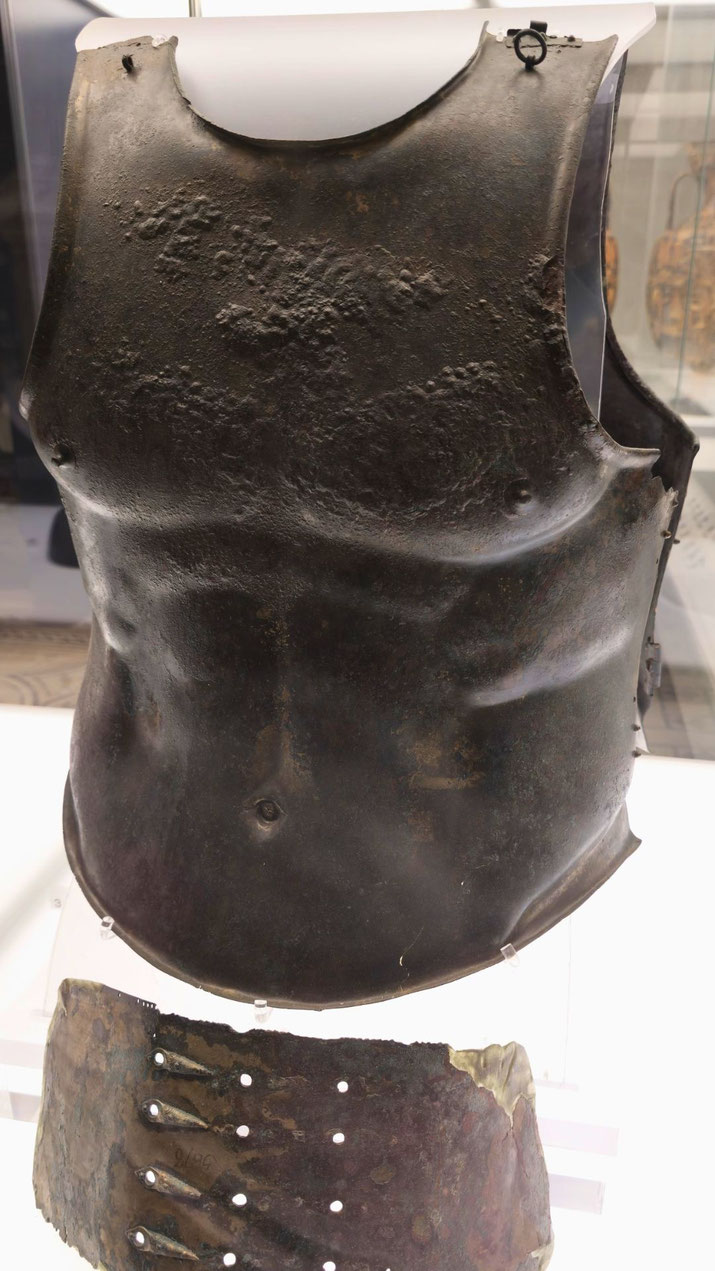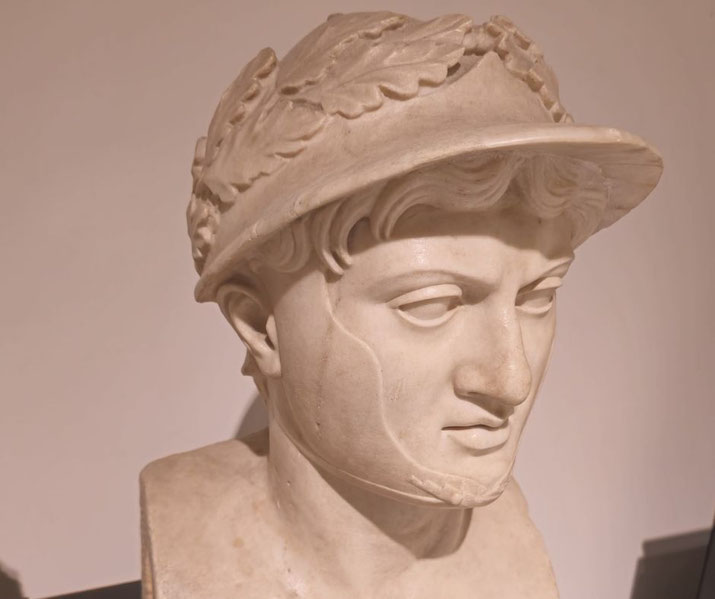The Great Debate: who would win if the Roman legions fought Macedonian phalanxes?

Two of the most powerful military formations of the ancient world were the Roman legion and the Macedonian phalanx, both of which have been lauded for their outstanding battlefield success and tactical discipline.
Both systems often helped build empires, conquered enemies, and earned reputations that still provoke debate today.
But which one was the most effective? If they met on a battlefield, who would win?
Contender 1: the Roman legions
Roman legions developed steadily during the early Republic, but they had generally reached their most effective form by the third and second centuries BC, especially during and after the Punic Wars.
A standard legion consisted of several thousand soldiers, typically ranging from 4,500 to 5,000 men, who were organised into maniples and, later, cohorts that allowed for increased battlefield mobility.
After the Marian reforms of 107 BC, the legion had largely standardised into ten cohorts of approximately 480 men each, which gave the legion an effective fighting strength of about 4,800 to 5,200 soldiers.
Legionaries were Roman citizens who typically trained to fight in close formation and who were equipped with a short stabbing sword known as a gladius, a large curved rectangular shield called a scutum, and a heavy throwing spear known as a pilum, some of which were designed to bend on impact to prevent reuse.
The pilum typically measured around two metres in length and weighed between two and four kilograms, which often gave it considerable piercing power.
Each legion operated under a chain of command led by a legatus, who oversaw the tribunes, centurions and lower-ranking officers.
Roman soldiers moved in coordinated formations and could often adapt to battlefield developments more rapidly than traditional linear units, since their smaller units allowed independent action within the wider army plan.
Roman engineers often travelled with each legion to construct fortified camps, roads, and bridges, which gave the army steady supply lines and protection during long campaigns.
The Via Appia, begun in 312 BC, was among the earliest of such roads and helped the army move more quickly into southern Italy.

The strengths of the legions
The Roman legion achieved its effectiveness largely through tactical flexibility, which was supported by disciplined training, and by the coordinated use of specialised weapons that broke up enemy formations before close combat.
The pilum allowed legionaries to weaken enemy shields or cause injuries from a distance.
Then, when gaps appeared in the line, Roman infantry advanced in tight formation and engaged with their gladii in brutal and efficient close combat.
Legionaries moved in a staggered formation where maniples could shift and support one another.
Since each soldier trained to respond quickly to signals and commands, the legion could maintain its unity even during confused engagements or engagements that moved quickly.
Their command structure, which gave centurions the authority to take initiative during battlefield conditions that changed, gave Roman forces a clear advantage in encounters that required quick decisions rather than strict orders.
One legendary example of such battlefield initiative came from Lucius Siccius Dentatus, a legendary centurion of the early Republic who was said in later Roman tradition to have fought in over 100 battles.
Their ability to build roads and secure supply lines generally allowed Roman armies to fight long campaigns in unfamiliar territory without running out of food or equipment.
The weaknesses of the legions
Roman legions could outlast and outmanoeuvre many opponents, but they generally relied heavily on rigorous training and strict coordination that reinforced unit discipline.
Newly raised or inexperienced units often performed poorly when exposed to sudden pressure or unfamiliar tactics.
Units that lost contact with neighbouring maniples could become surrounded, especially if enemy forces focused on a single vulnerable part of the line before reinforcements arrived.
Sometimes, Roman legions struggled when visibility was low or the terrain was difficult to navigate.
Then, commanders could not deploy their troops in the standard formation, and signals became harder to follow.
Also, if commanders misjudged the timing of their attack or failed to coordinate with supporting units, isolated maniples risked being overwhelmed before help could arrive.
Their heavy infantry core remained relatively slow and required time and space to deploy their pila and engage in tight formation.
When enemy forces relied on fast cavalry or sudden ambushes, Roman commanders needed to secure support from local allies or auxiliary troops who could defend the flanks or disrupt skirmishers before they inflicted too much damage.
Contender 2: the Macedonian phalanx
Philip II of Macedon created the phalanx to transform his kingdom’s military power, and his reforms later enabled his son, Alexander the Great, to conquer territory that stretched from Greece to India during the fourth century BC.
The Macedonian phalanx formed a dense block of infantry known as phalangites, who carried the sarissa, a two-handed pike that measured between 4.5 and 6 metres in length.
Later versions under the Antigonids may have extended beyond five metres, with some sources suggesting that lengths may have approached 6.2 metres, which would have allowed phalangites to strike enemies at greater distances, though the practical use of such extreme lengths is still debated.
Phalangites typically wore helmets and light armour and carried small shields that were strapped to their forearms, which were typically called a small round shield and were sometimes referred to as a pelta in later sources, and which freed their hands to wield the long pikes with both arms.
The strength of the phalanx came from its unity, since each man depended on the one beside him for protection.
Rows of pikes created a dense forest of points, and when the front ranks fell, those behind them lowered their weapons and filled the space without breaking the line.
Hellenistic rulers who followed Alexander often increased the number of ranks in the phalanx and added cavalry and light infantry on the flanks.
They often adjusted their formations according to enemy tactics. For example, they used specialised troops to counter archers or secure high ground.
At Gaugamela in 331 BC, Alexander’s infantry held the centre using the phalanx to absorb pressure.
His Companion cavalry carried out the key attack. They broke through the Persian left and enveloped the enemy.

The strengths of the phalanx
The Macedonian phalanx proved especially effective when deployed on open, level ground.
Because of its length and reach, the sarissa made direct attacks against the front of the formation almost impossible.
Also, the overlapping pikes gave the illusion of an impenetrable wall, which intimidated many enemies before they even made contact.
Phalangites trained constantly to move and strike as a single unit. Commanders knew they could count on the unity of their formation during battle.
For example, when Alexander used the phalanx in combination with rapid cavalry manoeuvres, the resulting shock often broke enemy lines and allowed his army to encircle opposing forces with speed and accuracy.
The effect on enemy morale made the phalanx more than just a tactical tool. Its large size and movement created fear among less experienced troops, and once it gained momentum, few formations could resist its advance without collapsing under pressure.
The weaknesses of the phalanx
The phalanx depended heavily on terrain. If the ground became uneven or rocky, the tightly packed formation could not maintain alignment.
Then, gaps opened in the line, and the soldiers became vulnerable to flanking or isolation.
Also, once enemy soldiers reached the flanks or rear of the phalanx, the long sarissas lost their usefulness in close combat.
Because of its design, the phalanx could not turn quickly. Any change in direction usually required time and coordination, which exposed it to surprise attacks.
Phalangites carried smaller shields and lighter armour, which offered little protection when they faced short swords or missiles at close range.
Commanders found it difficult to make rapid adjustments once the battle started.
As a result, if the phalanx lost unity at a critical moment, it often led to a complete breakdown of the line.
For example, when terrain or weather delayed deployment, the enemy had time to attack before the formation was ready, which reduced many of its advantages.
So, what happened when the Romans fought phalanxes?
Rome’s conquests during the third and second centuries BC brought it into direct conflict with Hellenistic kings who still used the phalanx as their primary battle formation.
These encounters tested each system in real battles rather than only in theory. As Roman legions fought more engagements against Hellenistic armies, their commanders increasingly recognised and exploited weaknesses in the phalanx's formation.
Roman experience, gained from years of war in Italy, Spain, and Africa, generally gave their generals the skills to adapt in the field.
The phalanx, although still powerful under the right conditions, began to falter when forced to operate on broken terrain or against opponents who avoided head-on confrontation.
Three key battles, which occurred over nearly a century, provide the clearest evidence of how the Roman legion defeated the Macedonian phalanx repeatedly through strategies that adapted to each situation.
Clash 1: The Pyrrhic War (280–75 BC)
In 280 BC, King Pyrrhus of Epirus brought his phalanx-based army to southern Italy to assist Tarentum against the advancing Roman Republic.
At Heraclea and Asculum, Pyrrhus won tactical victories with his trained phalanx and war elephants, which shocked Roman forces who had never encountered such weapons before.
However, the cost of these victories proved unsustainable.
Roman legions, which were supported by a deep manpower base and a system of recruitment that could replace fallen soldiers quickly, continued to resist.
During the Second Punic War, Rome had lost over 100,000 men but still fielded fresh legions every season, which showed their extraordinary reserves.
Pyrrhus, in contrast, struggled to replenish his elite troops far from home. Then, in 275 BC, he faced the Romans at Beneventum under the command of Manius Curius Dentatus.
The battle ended without a decisive victory for either side, but it persuaded Pyrrhus to withdraw from Italy.
The war showed that the phalanx could still inflict damage in open battle, but it could not overcome an opponent whose strategic depth and tactical flexibility allowed it to absorb heavy losses and continue to fight.

Clash 2: Battle of Cynoscephalae (197 BC)
In 197 BC, during the Second Macedonian War, Roman general Titus Quinctius Flamininus led his legions against Philip V of Macedon at Cynoscephalae in Thessaly.
The battlefield featured low hills and uneven ground, which made it difficult for the phalanx to deploy in full strength.
The site, named for the “Dog’s Heads” hills, broke up the field and disrupted Philip’s line.
Roman forces had reached the high ground first and had struck before Philip’s entire line had formed.
Also, as the Macedonian left wing advanced and pushed the Romans back, the Roman right flank used reserves to outflank the weaker part of the phalanx.
Then, legionaries slipped between the sarissas and attacked from behind.
The phalanx collapsed under the pressure. As a result, the battle ended with a clear Roman victory, and Macedonian power in Greece began to decline sharply.
Clash 3: Battle of Pydna (168 BC)
By 168 BC, the Macedonian phalanx faced the Roman legions one final time at Pydna.
Perseus of Macedon brought his army into the field against Lucius Aemilius Paullus, whose legions had prepared carefully for the encounter.
At first, the phalanx drove the Romans back. Then, as the Macedonian line advanced onto broken terrain, gaps opened between the ranks and Paullus ordered his men to attack those weak points.
Roman legionaries entered the formation and fought at close range, where the short gladius proved deadly.
According to Plutarch, "The unevenness of the ground broke the line of the phalanx... and the Romans rushed in with their swords."
The result was a crushing Roman victory. Thousands of Macedonians fell, and Perseus fled the field.
Perseus had withdrawn with his cavalry early in the battle, which had left the flanks unsupported at the decisive moment.
Also, the battle ended Macedon’s status as a major power and confirmed the superiority of the legion over the phalanx.
Rome dismantled the Antigonid kingdom and divided Macedon into four client republics.
The winner is...
After a century of direct encounters, the Roman legion had consistently performed better than the Macedonian phalanx on the battlefield.
Roman success came from coordination and discipline, which permitted rapid tactical change when conditions shifted.
The phalanx, while powerful in theory, relied on perfect conditions to succeed.
Once Roman commanders had learned how to disrupt its formation, they then repeated those tactics accurately.
Therefore, the legion proved both versatile and resilient, traits that made it more effective in battle.
By the second century BC, the Roman legion had defeated the phalanx and replaced it as the dominant model of warfare across the Mediterranean.
As a result, the age of the phalanx ended, and the Roman way of war became the new standard.
What do you need help with?
Download ready-to-use digital learning resources
Copyright © History Skills 2014-2025.
Contact via email
With the exception of links to external sites, some historical sources and extracts from specific publications, all content on this website is copyrighted by History Skills. This content may not be copied, republished or redistributed without written permission from the website creator. Please use the Contact page to obtain relevant permission.





